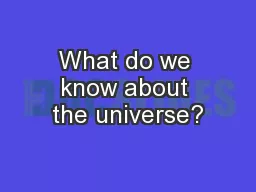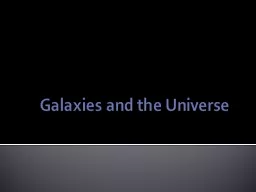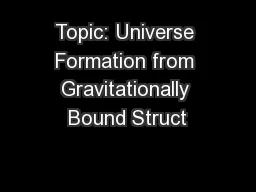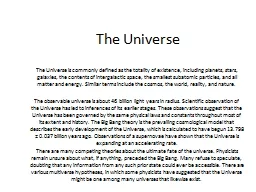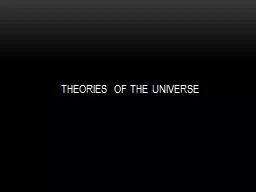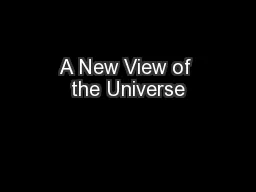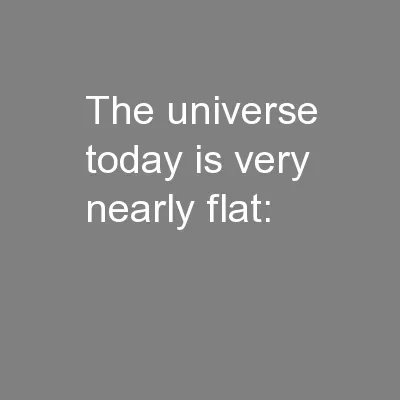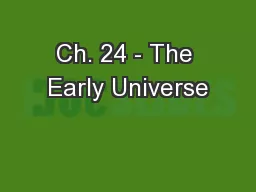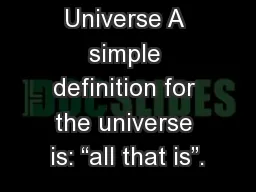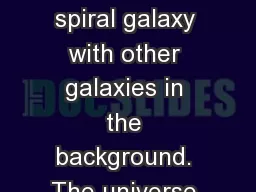PPT-What do we know about the universe?
Author : alida-meadow | Published Date : 2017-07-19
A finger of the Universes darkmatter skeleton which ultimately dictates where galaxies form has been observed for the first time Researchers have directly detected
Presentation Embed Code
Download Presentation
Download Presentation The PPT/PDF document "What do we know about the universe?" is the property of its rightful owner. Permission is granted to download and print the materials on this website for personal, non-commercial use only, and to display it on your personal computer provided you do not modify the materials and that you retain all copyright notices contained in the materials. By downloading content from our website, you accept the terms of this agreement.
What do we know about the universe?: Transcript
Download Rules Of Document
"What do we know about the universe?"The content belongs to its owner. You may download and print it for personal use, without modification, and keep all copyright notices. By downloading, you agree to these terms.
Related Documents

